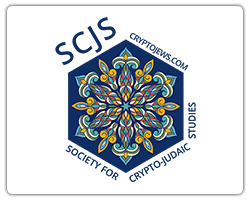Late last year I received several emails regarding a conference sponsored by Council of American Jewish Museums (CAJM) in Scottsdale Arizona I have to admit that the conference title was very intriguing “Converso as Metaphor: A Paradigm Shift” It was to be held at the Sylvia Plotkin Judaica Museum I wanted to find out more about the focus of the conference because converso Judaica is virtually nonexistent I was also curious as to how Jewish museums would go about displaying and presenting Southwest converso materials with sensitivity and accuracy
I was somewhat skeptical but after reading some of the literature I felt they were heading in the right direction An article in the CAJM newsletter had oriented members to the conference theme:
From the late 14th century many Spanish Jews concealed their Jewish religious and cultural expressions maintaining secret identities in order to “pass” in the majority culture Known as conversos or cryptoJews they created hybrid private/public personas merging Hispanic Catholic and Jewish elements Recently the descendants of a number of conversos have returned to more active and public identification as Jews So too in the modern era many Jews paralleled the converso experience of “hiddenness” and “emergence” For some explicit manifestations of Jewish identity are seldom expressed in public life and Jewishness is relegated to the private sphere
CAJM is looking for ways to assess the legitimacy authenticity and historical accuracy of someone’s Jewishness and how these trends manifest themselves in member’s lives and museums
I hoped the conference was not going to turn into a debate on the issue of who’s a Jew and Halapid CoEditor Dolores Sloan and I discussed whether to attend After we learned who some of the presenters were we changed our minds We were joined by SCJS member Randy Baca who lives in Scottsdale The keynote speakers’ session was titled “Converso as Metaphor: An Historical Perspective” with Stanley Hordes SCJS Vice President and faculty member University of New Mexico and David Gitlitz former SCJS conference speaker (Denver) and faculty member University of Rhode Island
Dr Gitlitz traced the history of various levels of Judaic observance among conversos since the fifteenth century He spoke about a “personal sense of religious identity” as “more important” to conversos “than the nuances of halachat” He advised conferees to “show the diversity of Judaism not just heroic adherents” and cautioned then to beware of myths that “romanticize colonial Jewry and Crypto Jews”
Dr Hordes described the “Sephardic legacy” of Spain and the southwestern United States due to “half of those [Jews] of Spanish and Portuguese ancestry staying and converting” in Iberia He showed how the “transoceanic movement of goods and services” facilitated converso immigration to Central and South America and the Philippines
Dr Hordes added that the dietary separation of milk and meat was never included on the Inquisition’s lists of Jewish practices
We attended the roundtable with Doctors Hordes and Gitlitz on the following day Alas a question from the audience asked about how to be sure that those claiming Jewish heritage are indeed Jews Randy supplemented the good Doctors’ replies with a familial anecdote about how her grandmother had told her cousin one day in confidence “Somos Judios” (We are Jews) and how she had realized that certain practices in her otherwise Christian family were Sephardic observances She advised the questioner that “if it looks like a duck walks like a duck and quacks like a duck it’s a duck”
Keynote speakers the following day were Janet Liebman Jacobs SCJS member former SCJS conference speaker (Denver) and faculty member U of Colorado and Illan Stavans faculty member Amherst College Dr Jacobs spoke on a work in progress regarding the endurance of Jewish belief among Crypto Jews over the centuries She described how women have been the chief conservators of Jewish heritage
“Crypto Jew is a metaphor for the greater Jewish world for the tension between the anxiety of personal danger and death and the need to find ways to survive” she concluded
Dr Stavans spoke on the reasons for the culture of secrecy among Crypto Jews and “why the secret is there” He noted that “we all love secrets” and want “to find out what we can” about them “We are of a generation that has turned memory into guilt” he added
During the question and comment period Dolly cautioned museum directors and staff not to let the literary use of the metaphor concept “trivialize” the CryptoJewish experience of centurieslong terror and anguish and commented on the omission of a Crypto Jew from the list of presenters
I had a chance to speak briefly with Rabbi Albert Plotkin who had attended our 1996 conference in Albuquerque We also ran into Adaire Klein from the Simon Wiesenthal Center in Los Angeles who addressed last year’s Los Angeles conference I had a short conversation with writer Robyn Cembalest Editor ARTnews who has written several articles on CryptoJews We thanked Pamela Levin local Chair and Director Sylvia Plotkin Judaica Museum and Amy Waterman CAJM Chair and Director Eldridge Street Project for welcoming us as representatives of SCJS Dolly and I would also especially like to thank our wonderful host Randy who made us most welcomed



